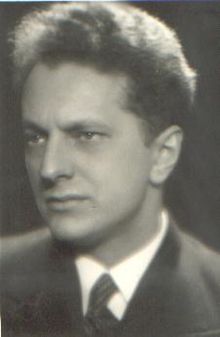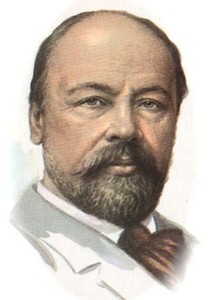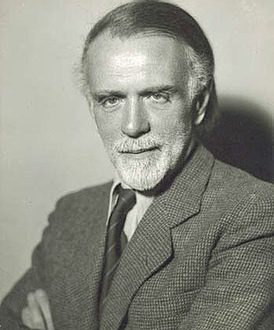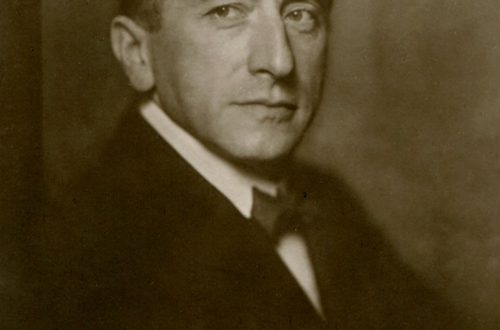
Балис Дварионас (Balys Dvarionas) |
Balys Dvarionas
B. Dvarionas, a multi-talented artist, composer, pianist, conductor, teacher, played a significant role in the development of Lithuanian musical culture. His work is inextricably linked with Lithuanian folk music. It was she who determined the melodiousness of the musical language of Dvarionas, based on the intonations of folk songs; simplicity and clarity of form, harmonic thinking; rhapsodic, improvisational presentation. Composer’s work of Dvarionas organically combined with his performing activities. In 1924 he graduated from the Leipzig Conservatory in piano with R. Teichmüller, then improved with E. Petri. From his student years he performed as a concert pianist, toured in France, Hungary, Germany, Switzerland, and Sweden.
Dvarionas brought up a whole galaxy of performers – from 1926 he taught the piano class at the Kaunas School of Music, from 1933 – at the Kaunas Conservatory. From 1949 until the end of his life he was a professor at the Lithuanian State Conservatory. Dvarionas was also involved in conducting. Already a mature conductor, he externally takes exams with G. Abendroth in Leipzig (1939). Conductor N. Malko, who toured in Kaunas in the early 30s, said about Dvarionas: “He is a conductor with innate abilities, a sensitive musician, aware of what is needed and what can be demanded from the orchestra entrusted to him.” It is difficult to overestimate the importance of Dvarionas in promoting national professional music: one of the first Lithuanian conductors, he set himself the goal of performing the works of Lithuanian composers not only in Lithuania, but throughout the country and abroad. He was the first to conduct the symphonic poem “The Sea” by M. K. Čiurlionis, included in the programs of his concerts the works of J. Gruodis, J. Karnavičius, J. Tallat-Kelpsa, A. Raciunas and others. Dvarionas also performed works by Russian, Soviet and foreign composers . In 1936, D. Shostakovich’s First Symphony was performed in bourgeois Lithuania under his direction. In 1940, Dvarionas organized and headed the Vilnius City Symphony Orchestra, in the 40-50s. he was the chief conductor of the Lithuanian Philharmonic Orchestra, the chief conductor of the Republican Song Festivals. “The song makes people happy. Joy, however, gives rise to strength for life, for creative work, ”Dvarionas wrote after the Vilnius city song festival in 1959. Dvarionas, the conductor, talked with the largest musicians of our century: S. Prokofiev, I. Hoffman, A. Rubinstein, E. Petri , E. Gilels, G. Neuhaus.
The first large-scale work of the composer was the ballet “Matchmaking” (1931). Together with J. Gruodis, the author of the ballet Jurate and Kastytis, and V. Batsevicius, who wrote the ballet In the Whirlwind of Dance, Dvarionas was at the origins of this genre in Lithuanian music. The next significant milestone was the “Festive Overture” (1946), also known as “At the Amber Shore”. In this orchestral picture, dramatic impetuous, impetuous themes alternate rhapsodically with lyrical ones based on folklore intonations.
On the occasion of the 30th anniversary of the Great October Revolution, Dvarionas wrote the Symphony in E minor, the first Lithuanian symphony. Its content is determined by the epigraph: “I bow to my native land.” This symphonic canvas is permeated with love for native nature, for its people. Almost all the themes of the Symphony are close to song and dance Lithuanian folklore.
A year later, one of the best works by Dvarionas appeared – the Concerto for Violin and Orchestra (1948), which became a significant achievement of the national musical art. The entry of Lithuanian professional music into the all-Union and international arena is connected with this work. Saturating the fabric of the Concerto with folk-song intonations, the composer embodies in it the traditions of the XNUMXth-century lyric-romantic concert. The composition captivates with melodism, generosity of kaleidoscopically changing thematic material. The score of the Concerto is clear and transparent. Dvarionas uses here the folk songs “Autumn Morning” and “Beer, Beer” (the second was recorded by the composer himself).
In 1950, Dvarionas, together with the composer I. Svyadas, wrote the National Anthem of the Lithuanian SSR to the words of A. Venclova. The instrumental concerto genre is represented in Dvarionas’s work by three more works. These are 2 concertos for his favorite piano instrument (1960, 1962) and a Concerto for horn and orchestra (1963). The first piano concerto is a deeply emotional composition dedicated to the 20th anniversary of Soviet Lithuania. The thematic material of the concerto is original, 4 parts of which, for all their contrast, are united by related themes based on folklore material. So, in part 1 and in the finale, a modified motive of the Lithuanian folk song “Oh, the light is burning” sounds. The colorful orchestration of the composition sets off the solo piano part. Timbre combinations are inventive, for example, in the slow 3rd part of the concerto, the piano sounds contrapuntally in a duet with a French horn. In the concerto, the composer uses his favorite method of exposition – rhapsody, which is especially clearly manifested in the development of the themes of the 1st movement. The composition contains many episodes of a genre-dance character, reminiscent of folk sutartines.
The second piano concerto was written for soloist and chamber orchestra, it is dedicated to the youth, who owns the future. In 1954, at the Decade of Lithuanian Literature and Art in Moscow, Dvarionas’ cantata “Greetings to Moscow” (on the st. T. Tilvitis) was performed for baritone, mixed choir and orchestra. This work became a kind of preparation for the only opera by Dvarionas – “Dalia” (1958), written on the plot of B. Sruoga’s drama “The Predawn Share” (libre. I. Matskonis). The opera is based on a plot from the history of the Lithuanian people — the brutally suppressed uprising of Samogitian peasants in 1769. The main character of this historical canvas, Dalia Radailaite, dies, preferring death to slavery.
“When you listen to the music of Dvarionas, you feel the composer’s amazing penetration into the soul of his people, the nature of his land, its history, its present days. It was as if the heart of native Lithuania expressed all the most significant and intimate through the music of its most talented composer… Dvarionas rightfully occupies his special, significant place in Lithuanian music. His work is not only the golden fund of the art of the republic. It adorns the entire multinational Soviet musical culture.” (E. Svetlanov).
N. Aleksenko





